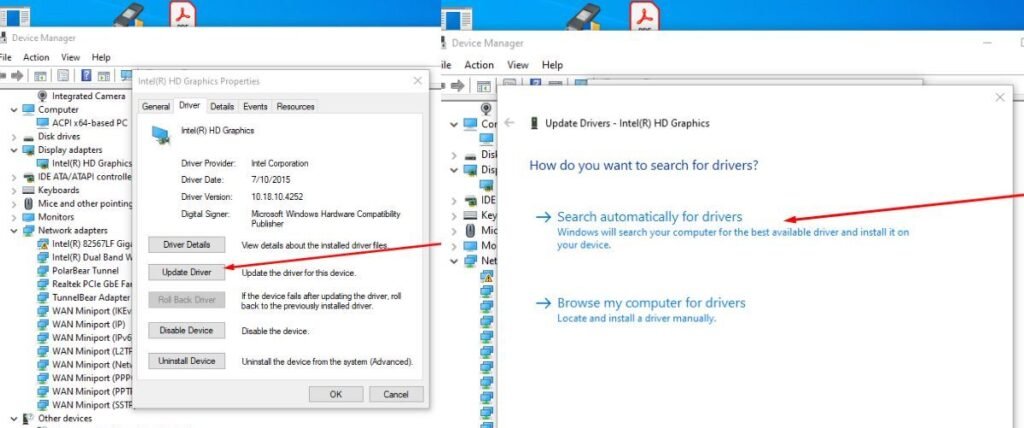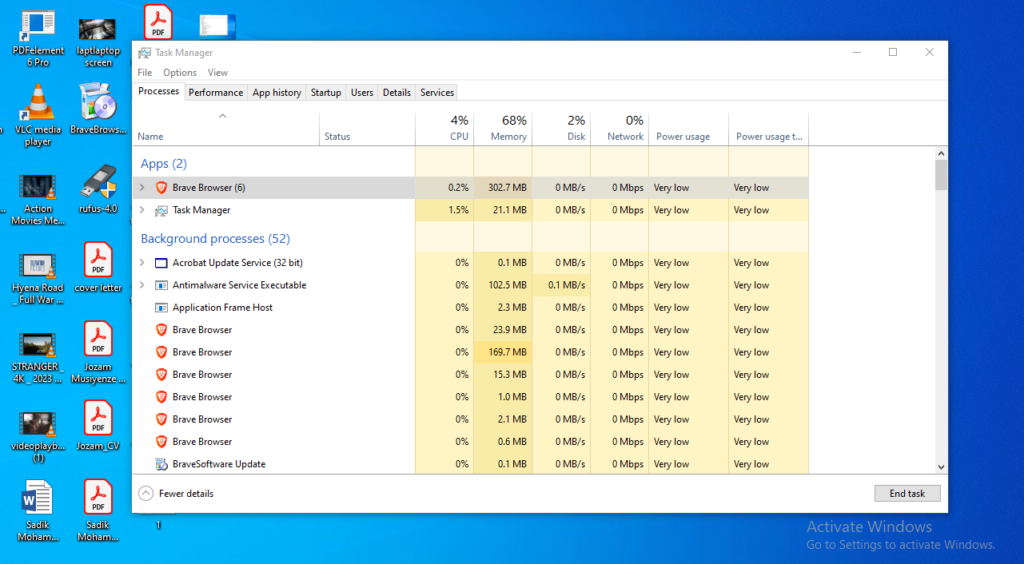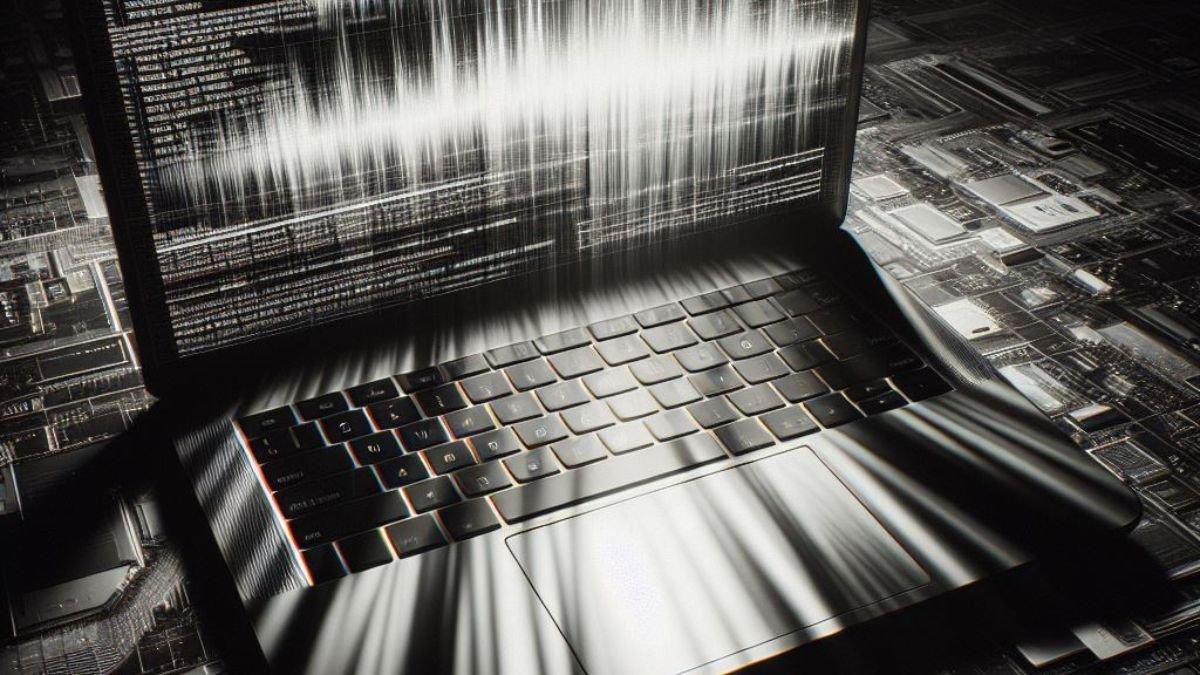Is your laptop screen flickering, making it difficult to work or watch videos? Don’t worry, you’re not alone. This common issue can be caused by various factors, both software and hardware related. This guide will equip you with the knowledge and steps to troubleshoot and potentially fix the flickering yourself.
What Causes Laptop Screen Flickering?
The culprit behind the flickering can be anything from outdated drivers to loose connections or even hardware malfunctions. Here are the potential causes:
Software:
- Outdated Display Drivers: Display drivers act as interpreters between your graphics card and the display, ensuring smooth communication. Outdated drivers can lead to compatibility issues and display problems like flickering.
- Incompatible Software: Newly installed software, especially graphics-intensive applications, might not be fully compatible with your system, causing display conflicts and flickering.
- Conflicting Programs: Sometimes, software running in the background can interfere with display functionality, leading to flickering. This can happen due to resource conflicts or compatibility issues.
Hardware:
- Loose Connections: Loose cables connecting the display panel to the motherboard or the power cable can cause display instability and flickering.
- Overheating: Laptops rely on proper cooling to function optimally. When they overheat, various components, including the display, can malfunction, leading to flickering.
- Faulty Display Panel: In rare cases, the display panel itself might be faulty due to physical damage, internal component failure, or manufacturing defects.
How to Fix Laptop Screen Flickering
Before diving into hardware fixes, let’s explore software solutions that might resolve the issue:
1. Update Display Drivers:
Outdated drivers are a common culprit behind display problems. Here’s how to update them in different operating systems:
- Windows:
- Search for “Device Manager” and expand “Display adapters.”
- Right-click your graphics card and select “Update driver.”
- Select the option “Automatically search for updated driver software.” Windows will then conduct an online search and proceed to install the most recent drivers.
- If an automatic update fails, you can download the latest drivers from your graphics card manufacturer’s website and install them manually.

- Mac:
- Go to “Apple menu” > “System Preferences” > “Software Update.”
- Install any available updates, including driver updates for your graphics card.
2. Adjust Display Settings:
Sometimes, a simple adjustment to your display settings can do the trick. Try the following:
- Refresh Rate: The refresh rate determines how often the image on your screen is updated. A lower refresh rate can cause flickering, especially in fast-paced scenarios. To adjust your display settings, simply right-click on your desktop. On Windows, choose “Display settings,” or on Mac, go to “System Preferences” > “Displays.” Locate the “Refresh rate” option and experiment with different settings, such as 60Hz or higher, to see if it improves your display experience.
- Brightness and Contrast: Adjusting these settings might also alleviate flickering in some cases. Experiment with different combinations to find the optimal balance for your eyes and reduce flickering if possible.
3. Check for Software Conflicts:
Recently installed software might be conflicting with your display drivers. Here’s how to identify the culprit:
1. Access the Task Manager on Windows or the Activity Monitor on Mac.
2. Look for any applications that coincide with the onset of the flickering issue.
3. Try temporarily disabling those applications one by one and observe if the flickering stops.
4. Restart your laptop after disabling each program to ensure changes take effect.
5. If disabling a specific program resolves the flickering, consider uninstalling it or finding an alternative.

Hardware Solutions:
If software solutions don’t work, consider these hardware checks:
1. Inspect Physical Connections:
Ensure all cables are securely plugged in:
- Power cable: A loose power connection can cause voltage fluctuations and display flickering. Make sure the cable is firmly connected to both the laptop and the power outlet.
- External monitor connection (if applicable): If you’re using an external monitor, check the connection between the monitor cable and both the laptop and the monitor. Loose connections can cause display instability and flickering.
- Internal components (advanced): If you’re comfortable, you can gently check for any loose internal components that might be affecting the display connection. However, proceed with caution and avoid touching sensitive components.
2. Address Overheating:
Overheating can cause various issues, including screen flickering. Here’s how to identify and address overheating:
- Clean vents and dust buildup: Dust accumulation can block vents and restrict airflow, leading to overheating. Use compressed air to gently clean the vents on the bottom and sides of your laptop.
- Ensure proper airflow: Avoid using your laptop on soft surfaces like pillows or blankets that can block ventilation.
- Consider using a cooling pad: If the laptop continues to overheat even after cleaning the vents, using a cooling pad can provide additional ventilation and help regulate temperature.
3. Identify Faulty Display Panel:
A faulty display panel is a less common cause, but it’s still a possibility. Here are signs to look for:
- Flickering persists across different software and hardware configurations.
- Visible damage on the display panel, such as cracks, discoloration, or dead pixels.
- Flickering is accompanied by unusual visual artifacts or distortion.
If you suspect a faulty display panel, it’s best to consult a qualified technician for diagnosis and potential repair or replacement.
Additional Tips and Precautions
- Clean the Laptop Screen: Dust buildup on the screen can sometimes interfere with display clarity and exacerbate flickering. Use a microfiber cloth dampened with distilled water to gently clean the screen. Refrain from employing strong chemicals or abrasive cleaning agents.
- Power Management Settings: Adjusting power management settings to prioritize performance over battery life can sometimes help reduce flickering, especially on laptops prone to throttling under power-saving modes.
- Monitor Software Updates: Keep your operating system, graphics drivers, and other relevant software updated to ensure compatibility and address potential bugs that might contribute to flickering.
- Create a System Restore Point: Before making significant changes to your system configuration or attempting hardware troubleshooting, create a system restore point. This allows you to revert to a previous state if the changes worsen the flickering issue.
Seeking Professional Help
If none of the above solutions work, it’s recommended to seek professional help from a qualified technician. They can diagnose the exact cause of the flickering and recommend appropriate repair options. This might involve:
- Replacing faulty hardware components: Depending on the diagnosis, technicians might need to replace faulty components like the display cable, inverter board, or even the display panel itself.
- Advanced troubleshooting: In complex cases, technicians might use specialized tools and techniques to diagnose hardware issues beyond the scope of DIY troubleshooting.
Conclusion
By following these comprehensive steps and understanding the potential causes of laptop screen flickering, you can effectively troubleshoot the issue in most cases.
Remember to start with software solutions and proceed cautiously with hardware troubleshooting. If the problem persists or you’re uncomfortable with any steps, seeking professional help is always the safest and most reliable option to ensure proper repair and prevent further damage to your laptop.





